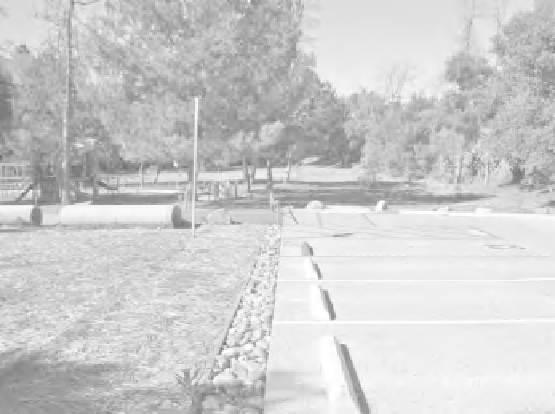Environmental Engineering Reference
In-Depth Information
Figure 8-4
Edge drain integral to bed, with riverstone surface.
(Figure 8-4). In curbed lots, inlets with sediment traps may be required at low
spots. Backup drainage elements will ensure the functionality of the infiltration
system if the permeability pervious pavement is ever compromised.
20. In areas with poorly draining soils, infiltration beds below pervious pave-
ment may be designed to discharge slowly to adjacent wetlands or bioretention
areas. In this way, a pervious pavement installation may act as an alternative
form of capture and reuse for landscape irrigation. Only in extreme cases (e.g.,
industrial sites with contaminated soils) will the aggregate bed need to be lined
to prevent infiltration.
21. In those areas where the threat of spills and groundwater contamination is
likely, pretreatment systems such as filters and wetlands may be required before
any infiltration occurs. In hot-spot areas such as truck stops and fueling stations,
the appropriateness of pervious pavement must be considered carefully. A stone
infiltration bed located beneath standard pavement, preceded by spill control and
water quality treatment, may be more appropriate.
22. The use of pervious pavement must be considered carefully in areas where
the pavement may be seal-coated or paved over due to lack of awareness, such as
individual home driveways. In those situations, a system that is not easily altered
by the property owner may be more appropriate. An example would include
an infiltration system constructed under a conventional driveway. Educational
signage at pervious pavement installations may guarantee its prolonged use in
some areas.












Search WWH ::

Custom Search